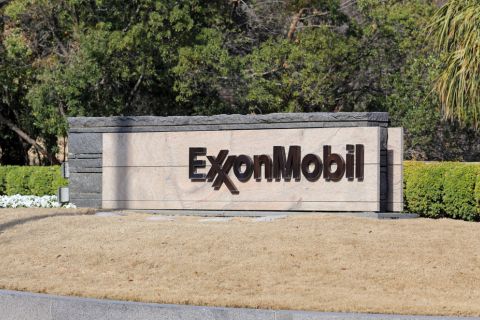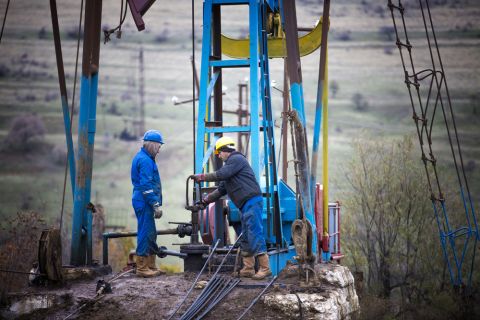
Basra, a VLCC operated by Al-Iraqia Shipping Services & Oil Trading (AISSOT), arrives at Moda Midstream’s Ingleside, Texas, dock. (Source: Signet Maritime video)
MIDLAND, Texas—Moda Midstream jumped in at Ingleside, Texas, because the water’s fine. So fine, in fact, that the terminal company’s facility can service very large crude carriers (VLCCs), the world’s biggest tankers, which is not common at U.S. ports.
“As a terminal guy, everything starts with the water,” said Moda Midstream CEO Bo McCall at Hart Energy’s recent Midstream Texas conference and exhibition. “Your capacity, all the things that are important in my business, start with the water. I can say there’s no water better than this.”
Watch: Bo McCall's presentation at Midstream Texas.
Moda’s 1,000-acre facility was home to Naval Station Ingleside until it closed in 2005. In 2010, the property was turned over to the Port of Corpus Christi. Traits that appealed to the admirals are the same that attracted Moda:
- Protected harbor;
- Ability to handle big boats (aircraft carriers for the U.S. Navy; VLCCs, Suezmax and Afromax carriers for Moda); and
- Proximity to the Gulf of Mexico.
Add to that another round of pipeline projects on the way that will feed Corpus Christi with crude from the Permian Basin and the area becomes the most economic route to use, McCall said.

“We feel the Ingleside area of the Corpus coastal bend is going to be the preferred location for exports in the U.S.,” he said.
Plains All American Pipelines’ Cactus II pipeline, scheduled to begin operations in the third quarter, will have capacity to move 670,000 barrels per day (bbl/d) from Wink, Texas, in the Permian to Corpus Christi. Gray Oak Pipeline, under construction by Phillips 66 Partners and Marathon Petroleum Corp., expects to begin service with 800,000 bbl/d capacity from the Permian by year-end. The EPIC pipeline has a capacity of 900,000 bbl/d and expects to place the line into service in the fourth quarter.
Eight pipeline projects will deliver to Ingleside from the Eagle Ford Shale.
One of the main benefits that Ingleside offers is marine logistics. The facility is 9 miles from open water and travel time to the dock from sea buoy is less than two hours, compared to four to seven-and-a-half hours for other coastal terminals.
“The logistics of getting the boats in and out is about 24 hours, which is unheard of on the U.S. Gulf Coast,” McCall said.
That advantage is critical to the facility’s economic advantage. Time is money. If transit time reaches six to seven hours, the chances of a vessel missing its daylight restriction window increase, meaning the ship sits and essentially has to wait until the next morning. Getting vessels in and out is a key component that translates to a true economic benefit, he said.
Moda is able to load 160,000 barrels per hour at Ingleside, McCall said. In a given situation, that means that Moda can load a VLCC at 80,000 barrels per hour and two Suezmax or Afromax tankers at 40,000 barrels per hour combined.
Recommended Reading
E&P BW Energy Undergoes ‘Technical’ Ownership Restructuring
2024-05-08 - The restructuring will not involve any change to the ultimate control of BW Energy as the shares currently held by BW Group will be sold to BW Energy Holdings.
Wood Mackenzie Appoints Jason Liu as CEO
2024-05-07 - Liu replaces former CEO Mark Brinin, who is departing to pursue other opportunities, Wood Mackenzie said.
Hess Midstream Subsidiary Plans Private Offering of Senior Notes
2024-05-08 - The proposed issuance is not expected to have a meaningful impact on Hess Midstream’s leverage and credit profile, according to Fitch Ratings.
Exxon Appoints Maria Jelescu Dreyfus to Board
2024-05-08 - Dreyfus is CEO and founder of Ardinall Investment Management, a sustainable investment firm, and currently serves on the board of Cadiz Inc. and Canada-based pension fund CDPQ.
OFS Sector Loses Jobs, but Trade Org Says Growth Potential Remains
2024-05-08 - According to analysis by the Energy Workforce & Technology Council, the OFS job market may still have potential for growth despite a slight decrease in the sector in April.






